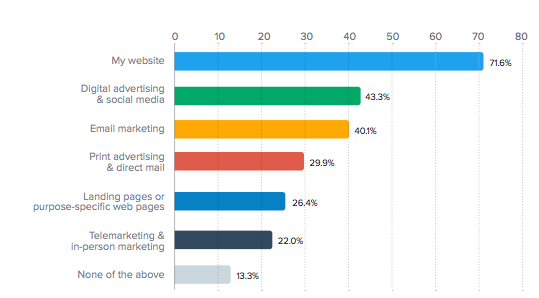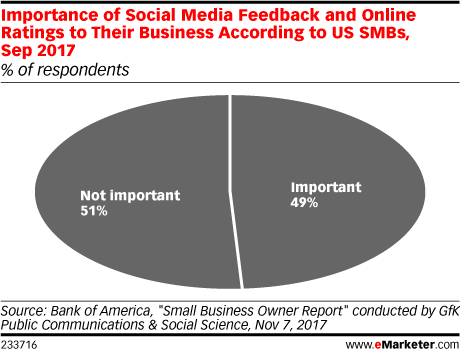Hey, did you watch the Grammy Awards? Probably not, since it was the lowest watched Grammys in nine years, taking a 24% drop since the last one. A big part of this seems to be due to the fragmentation of the audience. With more and more people neglecting traditional TV for streaming services, and with easy access to niche music genres, a broadcast award show that recognizes only the top entries in each field may no longer resonate with today’s segmented audience.

Traditional marketing simply cannot reach as many people as it once did. Even the superbowl of advertising, the Superbowl, is seeing less reach each year due to people either watching it via other channels or tuning out entirely. Reaching your audience is no longer a shotgun approach. It’s barely even surgical anymore. It’s nearly microsurgery. So how can small and mid-sized businesses with limited marketing budgets get anything going?
Social media marketing is not a great answer.
Many small businesses think that marketing via social media is a great answer. Facebook segments the audience for you. You choose the segment you want to appear on. Pay a few bucks, and you’ve got a sure-fire method of targeting who you want. This is a common tactic. In fact, a study published last year by Smart Insights showed that this method was the second most preferred marketing channel for small businesses:

Yet here’s the problem. People don’t really trust ads on social media anymore:

The above chart, from MarketingSherpa via CBT shows that ads on social media are one of the least trusted ads (fifth from the left), only just edging out banner ads! And no one likes banner ads.
But SMBs may protest and say they’re not really running ads on social media, but using the platform to engage with their followers. Fair, but if businesses are merely engaging with current followers on social platforms, they’re not doing much to gain new customers. And in fact, a recent survey of how SMBs leverage social media by Bank of America (via eMarketer) showed that half of the SMBs didn’t even think this type of communication was all that important.

The reason is that, without paid ads, running an effective social media marketing campaign takes a ton of effort and time. Creating content on a regular basis is often out of the scope of many busy SMBs, which is why they resort to paid ads in the first place: for quick wins. In fact, 52% of SMBs use fewer than three digital marketing properties/platforms, including their website and social media. It’s not because they don’t want to leverage more platforms with their content; it’s because they lack the time to do so.
Referral marketing is a better way to target audience slices.
Businesses tend to try to leverage social media because that’s where they think their audience, especially the younger audience, lives. While that may be true, SMBs still need to overcome the factors above: 1) distrust of ads on social media, 2) the time and effort of using social media without ads, and one we shouldn’t forget: 3) the whims of the platform. Facebook will be changing their feed in 2018. YouTube is cracking down on advertising in 2018. These platforms say jump, and you…

Instead of going whole hog on social media, a sound referral program is a more lucrative marketing channel. Focusing on referrals tackles the issues above:
- Referrals from friends, family, and even influencers are trusted, more than any other advertising source.
- A good referral program provides SMBs with an external sales/marketing force, where content and conversions are created for you, by your customer base, saving time.
- You run the program in-house, and aren’t subject to the whims of social platforms.
SMBs should focus efforts on referral and affiliate marketing due to high return-on-investment rates and because it’s a cost-per-sale model, meaning you only pay when you make a sale.
So referral marketing is less up-front cost, less effort, and usually see a higher return; a perfect channel for SMBs to concentrate their marketing efforts on. Yet referral marketing doesn’t crack the top three channels SMBs use (as seen above)! Keep in mind this stat from the Wharton School of Business (via Forbes):
83% of satisfied customers say they are willing to refer products or services. Only 29% ultimately do.
Meaning, your customers are ready and willing to refer. All they need is a little push (ie. incentive) to do so. That’s precisely what businesses need to focus their efforts on accomplishing. If you don’t, you’re leaving money on the table.
All the time and money in the world, businesses would focus on every marketing channel. But realistically, especially for SMBs, referral marketing is a better bet to invest in over channels such as social media.


